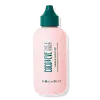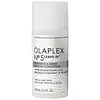What's inside
What's inside
 Key Ingredients
Key Ingredients

 Benefits
Benefits

 Concerns
Concerns

 Ingredients Side-by-side
Ingredients Side-by-side

Cyclopentasiloxane
EmollientDimethiconol
EmollientC15-19 Alkane
SolventCocos Nucifera Oil
MaskingParfum
MaskingOpuntia Ficus-Indica Extract
Skin ConditioningCarica Papaya Seed Oil
HumectantFicus Carica Fruit Extract
HumectantCarthamus Tinctorius Seed Oil
MaskingCitrus Medica Limonum Peel Extract
EmollientGarcinia Mangostana Fruit Extract
Skin ConditioningC10-18 Triglycerides
EmollientSodium Hyaluronate
HumectantTriolein
Skin ConditioningTocopheryl Acetate
AntioxidantGlyceryl Dioleate
EmollientBenzyl Salicylate
PerfumingLinalool
PerfumingCoumarin
PerfumingLimonene
PerfumingHexyl Cinnamal
PerfumingCyclopentasiloxane, Dimethiconol, C15-19 Alkane, Cocos Nucifera Oil, Parfum, Opuntia Ficus-Indica Extract, Carica Papaya Seed Oil, Ficus Carica Fruit Extract, Carthamus Tinctorius Seed Oil, Citrus Medica Limonum Peel Extract, Garcinia Mangostana Fruit Extract, C10-18 Triglycerides, Sodium Hyaluronate, Triolein, Tocopheryl Acetate, Glyceryl Dioleate, Benzyl Salicylate, Linalool, Coumarin, Limonene, Hexyl Cinnamal
Water
Skin ConditioningCetearyl Alcohol
EmollientAstrocaryum Murumuru Seed Butter
EmollientPropanediol
SolventBehentrimonium Chloride
PreservativeGlycerin
HumectantCetyl Alcohol
EmollientIsoamyl Laurate
EmollientSqualane
EmollientBis-Aminopropyl Diglycol Dimaleate
Skin ConditioningBrassicyl Valinate Esylate
EmollientCetyl Esters
EmollientPentylene Glycol
Skin ConditioningPhenethyl Benzoate
EmollientBrassica Campestris/Aleurites Fordi Oil Copolymer
Skin ConditioningHydroxypropyl Guar Hydroxypropyltrimonium Chloride
Caprylic/Capric Triglyceride
MaskingCetrimonium Chloride
AntimicrobialCaesalpinia Spinosa Gum
Skin ConditioningFructooligosaccharides
HumectantBeta Vulgaris Root Extract
Skin ConditioningSodium PCA
HumectantHydroxypropyl Starch Phosphate
Guar Hydroxypropyltrimonium Chloride
Skin ConditioningSodium Lactate
BufferingHydrogenated Ethylhexyl Olivate
EmollientCalcium Gluconate
HumectantArgania Spinosa Kernel Oil
EmollientCaprylyl Glycol
EmollientCocos Nucifera Oil
MaskingPanthenol
Skin ConditioningArginine
MaskingEthylhexylglycerin
Skin ConditioningOryza Sativa Bran Extract
Skin ConditioningSodium Phytate
Aspartic Acid
MaskingPotassium Lactate
BufferingXimenia Americana Seed Oil
EmollientPCA
HumectantHydrogenated Olive Oil Unsaponifiables
EmollientButylene Glycol
HumectantLactic Acid
BufferingRaphanus Sativus Seed Extract
Skin ConditioningOctyldodecyl Oleate
EmollientOctyldodecanol
EmollientHelianthus Annuus Extract
EmollientPropylene Glycol
HumectantGlycine
BufferingCitric Acid
BufferingAlanine
MaskingAlgin
MaskingCoco-Glucoside
CleansingSorbitan Oleate
EmulsifyingSerine
MaskingTocopherol
AntioxidantRosmarinus Officinalis Leaf Extract
AntimicrobialValine
MaskingCarrageenan
Chitosan
Xanthan Gum
EmulsifyingIsoleucine
Skin ConditioningProline
Skin ConditioningThreonine
Histidine
HumectantPhenylalanine
MaskingMagnolia Officinalis Bark Extract
AntimicrobialBetula Alba Bark Extract
MaskingCrambe Maritima Extract
Skin ProtectingUlmus Fulva Bark Extract
MoisturisingCaesalpinia Spinosa Fruit Extract
Skin ProtectingSodium Hyaluronate
HumectantHydrolyzed Ceratonia Siliqua Seed Extract
Skin ConditioningZea Mays Starch
AbsorbentHelianthus Annuus Sprout Extract
Skin ConditioningPolyquaternium-7
Sodium Hydroxide
BufferingPhenoxyethanol
PreservativeSodium Benzoate
MaskingPotassium Sorbate
PreservativeParfum
MaskingHexyl Cinnamal
PerfumingLimonene
PerfumingCitral
PerfumingLinalool
PerfumingCitronellol
PerfumingWater, Cetearyl Alcohol, Astrocaryum Murumuru Seed Butter, Propanediol, Behentrimonium Chloride, Glycerin, Cetyl Alcohol, Isoamyl Laurate, Squalane, Bis-Aminopropyl Diglycol Dimaleate, Brassicyl Valinate Esylate, Cetyl Esters, Pentylene Glycol, Phenethyl Benzoate, Brassica Campestris/Aleurites Fordi Oil Copolymer, Hydroxypropyl Guar Hydroxypropyltrimonium Chloride, Caprylic/Capric Triglyceride, Cetrimonium Chloride, Caesalpinia Spinosa Gum, Fructooligosaccharides, Beta Vulgaris Root Extract, Sodium PCA, Hydroxypropyl Starch Phosphate, Guar Hydroxypropyltrimonium Chloride, Sodium Lactate, Hydrogenated Ethylhexyl Olivate, Calcium Gluconate, Argania Spinosa Kernel Oil, Caprylyl Glycol, Cocos Nucifera Oil, Panthenol, Arginine, Ethylhexylglycerin, Oryza Sativa Bran Extract, Sodium Phytate, Aspartic Acid, Potassium Lactate, Ximenia Americana Seed Oil, PCA, Hydrogenated Olive Oil Unsaponifiables, Butylene Glycol, Lactic Acid, Raphanus Sativus Seed Extract, Octyldodecyl Oleate, Octyldodecanol, Helianthus Annuus Extract, Propylene Glycol, Glycine, Citric Acid, Alanine, Algin, Coco-Glucoside, Sorbitan Oleate, Serine, Tocopherol, Rosmarinus Officinalis Leaf Extract, Valine, Carrageenan, Chitosan, Xanthan Gum, Isoleucine, Proline, Threonine, Histidine, Phenylalanine, Magnolia Officinalis Bark Extract, Betula Alba Bark Extract, Crambe Maritima Extract, Ulmus Fulva Bark Extract, Caesalpinia Spinosa Fruit Extract, Sodium Hyaluronate, Hydrolyzed Ceratonia Siliqua Seed Extract, Zea Mays Starch, Helianthus Annuus Sprout Extract, Polyquaternium-7, Sodium Hydroxide, Phenoxyethanol, Sodium Benzoate, Potassium Sorbate, Parfum, Hexyl Cinnamal, Limonene, Citral, Linalool, Citronellol
 Reviews
Reviews

Alternatives
Ingredients Explained
These ingredients are found in both products.
Ingredients higher up in an ingredient list are typically present in a larger amount.
Cocos Nucifera Oil is obtained from the kernels of the coconut fruit. In other words, this is coconut oil.
Coconut Oil is rich in fatty acids with lauric acid making up the majority of these. It also contains linoleic acid. Due to this high fatty acid content, coconut oil helps trap moisture and soften skin.
Despite being antibacterial, coconut oil may not be great for acne-prone skin. It is comedogenic and may clog pores. This ingredient may not be safe for malassezia or fungal acne.
Note: Coconut Oil should not replace your sunscreen for UV protection. Studies show it only blocks about 20% of UV.
This oil is non-volatile and has a light scent.
The term 'fragrance' is not regulated in many countries. In many cases, it is up to the brand to define this term. For instance, many brands choose to label themselves as "fragrance-free" because they are not using synthetic fragrances. However, their products may still contain ingredients such as essential oils that are considered a fragrance.
Learn more about Cocos Nucifera OilHexyl Cinnamal is a fragrance ingredient with a similar scent to jasmine. It can be naturally found in chamomile essential oil.
This ingredient is a known EU allergen and may sensitize the skin. The EU requires this ingredient to be listed separately on an ingredients list.
Hexyl Cinnamal is not water soluble but is soluble in oils.
Learn more about Hexyl CinnamalLimonene is a fragrance that adds scent and taste to a formulation.
It's found in the peel oil of citrus fruits and other plants such as lavender and eucalyptus. The scent of limonene is generally described as "sweet citrus".
Limonene acts as an antioxidant, meaning it helps neutralize free radicals.
When exposed to air, oxidized limonene may sensitize the skin. Because of this, limonene is often avoided by people with sensitive skin.
The term 'fragrance' is not regulated in many countries. In many cases, it is up to the brand to define this term. For instance, many brands choose to label themselves as "fragrance-free" because they are not using synthetic fragrances. However, their products may still contain ingredients such as essential oils that are considered a fragrance.
Learn more about LimoneneLinalool is a fragrance and helps add scent to products. It's derived from common plants such as cinnamon, mint, citrus, and lavender.
Like Limonene, this ingredient oxidizes when exposed to air. Oxidized linalool can cause allergies and skin sensitivity.
This ingredient has a scent that is floral, spicy tropical, and citrus-like.
Learn more about LinaloolParfum is a catch-all term for an ingredient or more that is used to give a scent to products.
Also called "fragrance", this ingredient can be a blend of hundreds of chemicals or plant oils. This means every product with "fragrance" or "parfum" in the ingredients list is a different mixture.
For instance, Habanolide is a proprietary trade name for a specific aroma chemical. When used as a fragrance ingredient in cosmetics, most aroma chemicals fall under the broad labeling category of “FRAGRANCE” or “PARFUM” according to EU and US regulations.
The term 'parfum' or 'fragrance' is not regulated in many countries. In many cases, it is up to the brand to define this term.
For instance, many brands choose to label themselves as "fragrance-free" because they are not using synthetic fragrances. However, their products may still contain ingredients such as essential oils that are considered a fragrance by INCI standards.
One example is Calendula flower extract. Calendula is an essential oil that still imparts a scent or 'fragrance'.
Depending on the blend, the ingredients in the mixture can cause allergies and sensitivities on the skin. Some ingredients that are known EU allergens include linalool and citronellol.
Parfum can also be used to mask or cover an unpleasant scent.
The bottom line is: not all fragrances/parfum/ingredients are created equally. If you are worried about fragrances, we recommend taking a closer look at an ingredient. And of course, we always recommend speaking with a professional.
Learn more about ParfumSodium Hyaluronate is hyaluronic acid's salt form. It is commonly derived from the sodium salt of hyaluronic acid.
Like hyaluronic acid, it is great at holding water and acts as a humectant. This makes it a great skin hydrating ingredient.
Sodium Hyaluronate is naturally occurring in our bodies and is mostly found in eye fluid and joints.
These are some other common types of Hyaluronic Acid:
Learn more about Sodium Hyaluronate